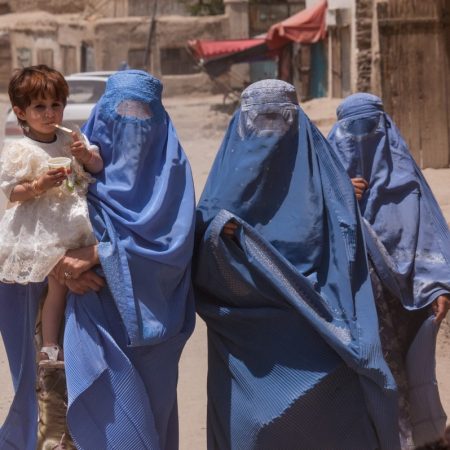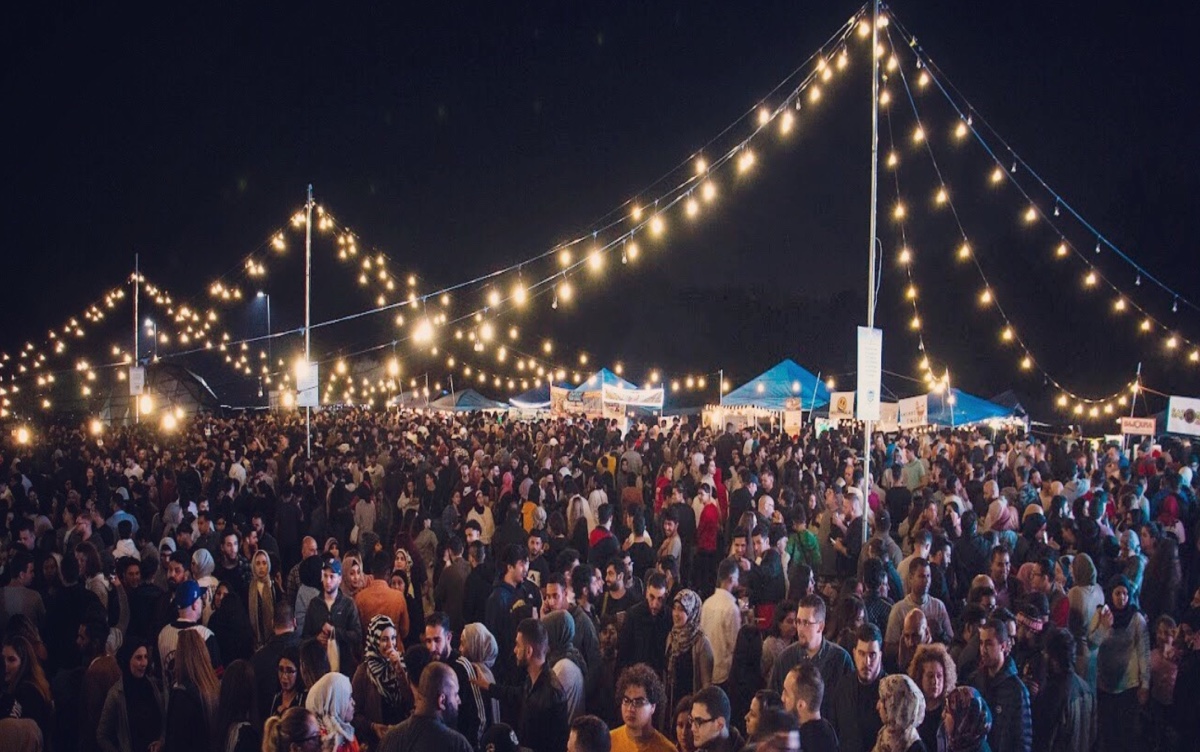John Halaka; Professor, Artist, Political Activist
By Laura Fawaz, Contributing Reporter
 |
Professor John Halaka poses next to the welcome sign for his event “Landscapes of Desires†at the Arab American National Museum. |
Dearborn, MI–The Arab American National Museum in Dearborn, hosted a talk event Friday night with political activist, artist and Professor John Halaka of San Diego, California.
Titled, “Landscapes Of Desires,†Halaka’s work revolves around what he refers to as the “instability†caused by the “forced exile†of the Palestinians. He received his Bachelors of Art from the City University of New York in 1979, and his Masters of Fine Art from the University of Houston in 1983. He has exhibited his collection nationally as well as internationally, and is especially known for the group exhibition “Made In Palestine,†organized and hosted in Houston, Texas in 2003. He’s been teaching at the University of San Diego since 1991.
Halaka has even created documentary films, the first one being The Presence of Absence In The Ruins of Kafr Bir’im, and aired on 60 Minutes in November 2007. This film shows the life of a man who, along with several others, was displaced from his Palestinian village of Kafr Bir’im at the age of 13. They were later able to return, about 25 years later, but with a bit of a catch. This young boy is now a middle-aged father named Abu Issa, and said, “One of the reasons we were permitted to return is because we were Christian.â€
They were given the homes of ethnically cleansed Muslims in the village of Jaesh. Abu Issa described the bitter sweet feeling of finally being able to go home, but knowing that it is being done in the same method that it was done to you; by illegally taking someone else’s home.
Halaka calls this a “great tragedy,†for these Palestinians who are able to finally return to their homeland, but having to live in the home of another Palestinian who had lost their homes. Another tragedy is how the Palestinians were robbed of this home land, lively hood, income, agricultural income, with no way to survive, until they were hired to “build Israel,†the country that took all of the above away from them, along with their dignity. They were very poorly paid, and later known as Israeli Arabs. They had to build everything, the synagogues, the factories, and even the separation wall.
“Landscapes Of Desires†revolve around three words: instability, resilience and resistance. These strong words are deep within each painting and drawing in this exhibit, politically, sociologically and physiologically. Halaka explained that though these are subtle dimensions, it is the entire weight of each art piece produced. “The images are deliberately void of overt political and cultural references to Palestine,†elaborated Halaka when discussing that these types of struggles are parallels between Palestinians and other persecuted people.
He began Friday’s talk luring his audience onto the path that brought him to this political theme of art. His first section of his art pieces titled Artist As A Public Servant. “For a little over 3 decades, my work has explored the esthetics of instability. I’ve attempted to bring to visual expressions the feeling of being pulled out and being pushed off balance, and of our struggle … resisting the forces that constantly try to undermine our stability and our resilience in our ability to recover from physiological trauma,†Halaka began.
The images are designed to be beautiful and tragic, simultaneously. And Halaka says that this gap is where he feels most comfortable as an artist. In 2006, while he was in Palestine, he recorded interviews with Palestinian refugees, as well as searched and photographed their destroyed villages in different parts of the country. There are 531 Palestinian villages that were ethnically cleansed and destroyed, since 1948, resulting in a displacement of approximately 850,000 Palestinian people between December 1947 and December 1948. 85% of the native population was illegally exiled so that Israel could be created. Three generations later, the number of Palestinians living in exile is now over eight million individuals who are scattered in all parts of the globe.
“I wanted the viewer to wonder about the origins of the ruins,†said Halaka.
Halaka’s drawings are composed from photographs and video stills he took in several destroyed Palestinian villages that he visited to interview the survivors that were ethnically cleansed. These Palestinian villages have been physically erased, literally, with their names wiped out from all official maps created after 1948. Most renamed as Israeli towns, with all of their agricultural lands confiscated, settled on and cultivated by Israeli settlers who had new towns built. The experience of a forced migration is one of the greatest sources of instability. “Being stripped of one’s home and homeland, denied one’s identity and history, repeatedly rejected and humiliated and even blamed for your demise and perpetually ignored and forgotten by a world that worships the powerful and disdains the victim. That is the experience of exile,†said Halaka.
“Visual disappearance of an igneous people.â€
“I wanted to create an images that would allow the viewer to pause, and look and feel and think.â€
“I tried to create ghostly images and mirage-like landscapes that looked like they were in the process of disappearing, or conversely, immerging from an obscurer vest.â€
Halaka hopes that these pieces will make people think about the situation, the place that is Palestine, what happened to the Palestinian people during their forced exile, but moreover, the complication of the tragedy as a world. “A Palestinian standing in front of my drawings would reflect on a cultural genocide and the physical devastation that was inflicted on her or him. A Native American or an African American would reflect on the massive genocide that decimated their societies and almost erased their histories. A European Jew would reflect on the incomprehensible violence inflicted upon them by their fellow Europeans, and would hopefully reflect on the tragic irony possibly the greatest irony of the 20th Century that the generation of the holocaust inflicted and continues to inflict the cultural holocaust on the Palestinians.â€
“Stripped of their identity and driven from their land, refugees live as ghosts, unseen and unheard, unknown and forgotten … Refugees drift from no where to no where living like ghosts in an endless sea of fog, forgotten survivors, haunting my consciousness.â€
Halaka concluded with, “It’s important to remind the world that this catastrophe was not caused by natural forces, but by the cruel hands of humans. It is also critical to remind the world that we all have a moral obligation to identify and to act on our political responsibilities towards the Palestinians.â€
To see Halaka’s art, check out www.johnhalaka.com, a website dedicated to his paintings and drawings.
15-43












2013
916 views
views
0
comments